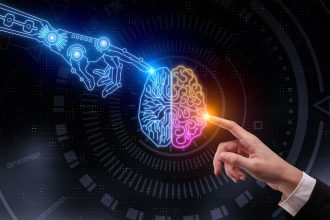From its central position in the AI boom, NVIDIA announced several server and simulation tools at this week’s SIGGRAPH conference in Vancouver, highlighting advancements aimed at accelerating AI for robotics. The company said that physical AI, designed to understand and interact with the real world, will be the next frontier in artificial intelligence.
Physical AI enhances robotics
NVIDIA announced three major categories of tools to enable industrial or physical AI and robotic simulation:
- New Omniverse SDKs and libraries for world simulation.
- Significant updates to Cosmos world foundation models for physical AI reasoning.
- Expanded AI computing infrastructure.
“The pace is incredible,” said Rev Lebaredian, vice president of Omniverse and simulation technologies at NVIDIA. “I don’t think we’ve ever had this much momentum, this many resources, dedicated to robotics and robotics research and applications of robotics ever in human history. So we’re seeing new things every month, every week.”

These let developers train AI systems that understand the physical world, suitable for industrial robotics solutions. New Omniverse NuRec SDKs and libraries introduce Omniverse RTX ray-traced 3D Gaussian splatting, a rendering technique that enables developers to run simulations under real-world physical conditions in 3D using sensor data.
Meanwhile, updates to Cosmos World Foundation models expand the world simulation options. A distilled version of Cosmos Transfer generates synthetic data for what NVIDIA describes as infinite options for scenes, while Cosmos Transfer-2 speeds up photorealistic synthetic data generation. Another tool, Cosmos Predict, generates an image-to-future-world-state.
Another addition, Cosmos Reason, is a 7-billion-parameter reasoning vision language model that solves multi-step tasks, handles ambiguity, and reacts to new, unseen experiences in physical AI, edge, and robotics deployments.
“By combining AI reasoning with scalable, physically accurate simulation, we’re enabling developers to build tomorrow’s robots and autonomous vehicles that will transform trillions of dollars in industries,” Lebaredian said in the NVIDIA press release.
The new libraries and tools are available as of Aug. 11.
RTX Pro series builds out AI infrastructure
NVIDIA also announced new RTX Pro servers that enable enterprise systems to take advantage of Blackwell’s AI performance for agentic and physical AI. The servers will be available through partners like Cisco, Dell, Lenovo, HPE, and Supermicro, according to NVIDIA. Packaged in a 2U form factor, the servers fit common rack-mounted systems.
Suitable for data analytics, simulation, video processing, and graphics rendering workloads, the servers integrate with the NVIDIA OmniverseTM libraries and Cosmos world foundation models to accelerate physical AI development.

The Blackwell GPU is coming soon to compact workstations. Partner system builders will offer workstations with NVIDIA RTX Pro 40000 SFF Edition and 2000 Blackwell GPUs.
Configurations with eight RTX PRO 6000 GPUs in 4U form factors are available from partners as of Aug. 11, while the 2U mainstream RTX PRO Servers will follow later in 2025.
“AI is reinventing computing for the first time in 60 years — what started in the cloud is now transforming the architecture of on-premises data centers,” said Jensen Huang, founder and chief executive officer of NVIDIA, in a press release. “With the world’s leading server providers, we’re making NVIDIA Blackwell RTX PRO Servers the standard platform for enterprise and industrial AI.”
Models added to NVIDIA’s agentic AI stable
As AI companies compete to make the most useful, most responsive AI agents, NVIDIA provides the infrastructure behind much of that work. At SIGGRAPH, the GPU giant announced new models in the Nemotron reasoning model family: NVIDIA Nemotron Nano 2 and Llama Nemotron Super 1.5.
Nemotron Nano 2 adds 6x higher token generation than its predecessor. Nemotron Super 1.5 adds reasoning capability. Both models reduce reasoning cost by 60%, according to NVIDIA.
The company said both models will be available soon.
More in AI news: Many GPT-5 users aren’t happy with their ChatGPT experience, and OpenAI reinstated GPT-4o for some subscribers in response.




